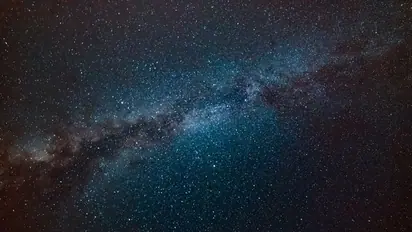Scientists detect'ghost particles' spewing from our Milky Way galaxy in landmark discovery

Synopsis
Due to their minimal interaction with the rest of the physical universe, these particles are extremely difficult to detect, hence the name "ghost particles." Detectors at the IceCube Neutrino Observatory at the Amundsen-Scott South Pole Station were reportedly utilised by the researchers.
Scientists have discovered 'ghost particles' being emitted from within our Milky Way galaxy, an exciting discovery that may open up a new window of research. It is reportedly said that neutrinos are formed from radioactive decay, something that occurs in nuclear reactors, when high-energy particles strike atoms.
Due to their minimal interaction with the rest of the physical universe, these particles are extremely difficult to detect, hence the name "ghost particles." Detectors at the IceCube Neutrino Observatory at the Amundsen-Scott South Pole Station were reportedly utilised by the researchers.
Manipur violence: CM Biren Singh takes U-Turn, tears down resignation letter
Speaking to a news organisation, Prof Subir Sarkar from the University of Oxford said, "This is the first time we're seeing our Galaxy using particles rather than photons of light." This, he explained, provides a view of "high energy processes that shape our galaxy".
"The neutrino is a ghostly particle; it's basically almost without mass. They're essentially moving at the speed of light and might pass through the Galaxy and not interact with anything. That is why, in order to see them, you need a massive detector," he added.
A study giving details about the discovery has been published in the journal Science. According to space.com, the observatory is embedded within a gigaton of ice. It encompasses 0.24 cubic miles (1 cuib kilometre) of Antarctic ice holding more than 5,000 light sensors.
UAE announces petrol, diesel prices for July 2023; Check out the new prices
According to the site, these devices keep an eye out for the distinctive light flashes that appear when neutrinos do occasionally collide with atoms.
The Milky Way's plane, a part of the galaxy that is thick and spread out across its equator, was the area of study for the astronomers. They examined 60,000 neutrinos over the course of a decade's worth of IceCube data.
Neutrinos are thought to come from the Milky Way, especially when cosmic rays contact dust and gas, according to scientists. However, they have just now made the discovery.
Check the Breaking News Today and Latest News from across India and around the world. Stay updated with the latest World News and global developments from politics to economy and current affairs. Get in-depth coverage of China News, Europe News, Pakistan News, and South Asia News, along with top headlines from the UK and US. Follow expert analysis, international trends, and breaking updates from around the globe. Download the Asianet News Official App from the Android Play Store and iPhone App Store for accurate and timely news updates anytime, anywhere.